Sacred Indigenous ceremonies connect us to ancient rhythms that have sustained communities across Ontario for millennia. These profound spiritual practices, rooted in Indigenous environmental wisdom, continue to honor the delicate relationship between people, land, and spirit. From sunrise ceremonies welcoming each new day to seasonal celebrations marking nature’s cycles, these traditions offer powerful teachings about respect, gratitude, and interconnectedness.
Today’s ceremonies remain vibrant touchstones of cultural identity, healing, and renewal. Whether it’s the sacred use of medicines like sage and sweetgrass, the transformative power of sweat lodge ceremonies, or the community-building spirit of pow wows, each practice carries deep meaning passed down through generations. For visitors seeking to learn about these traditions, approaching with humility, following proper protocols, and connecting with Indigenous communities directly ensures these sacred practices are honored appropriately.
Understanding and respecting Indigenous ceremonies opens doorways to profound wisdom about living in harmony with the natural world. However, remember that these are not tourist attractions, but rather living spiritual practices that deserve the utmost reverence and care.
The Four Sacred Seasons in Indigenous Traditions
Spring: Time of Renewal
As winter’s grip loosens, Indigenous communities across Ontario celebrate the sacred time of renewal through time-honored spring ceremonies. The widely cherished maple syrup ceremony, known as “Ziigwan” among Anishinaabe peoples, honors the first flowing of maple sap – a vital spring medicine and traditional food source. Community members gather in sugar bushes to give thanks for this gift from the Creator and share teachings about responsible harvesting practices.
Seed blessing ceremonies hold equal significance during this season of awakening. These intimate gatherings typically occur just before planting time, when knowledge keepers and elders offer tobacco and prayers to bless the seeds that will nourish their communities. The ceremonies often include traditional songs, the burning of sacred medicines, and the sharing of ancestral agricultural wisdom.
Many First Nations communities also hold special ceremonies to welcome the return of migratory birds and honor the first thunders of spring. These celebrations remind us of nature’s cycles and our responsibility to care for Mother Earth. When attending any Indigenous ceremony as a visitor, remember to follow local protocols, dress respectfully, and only participate when explicitly invited by community members.
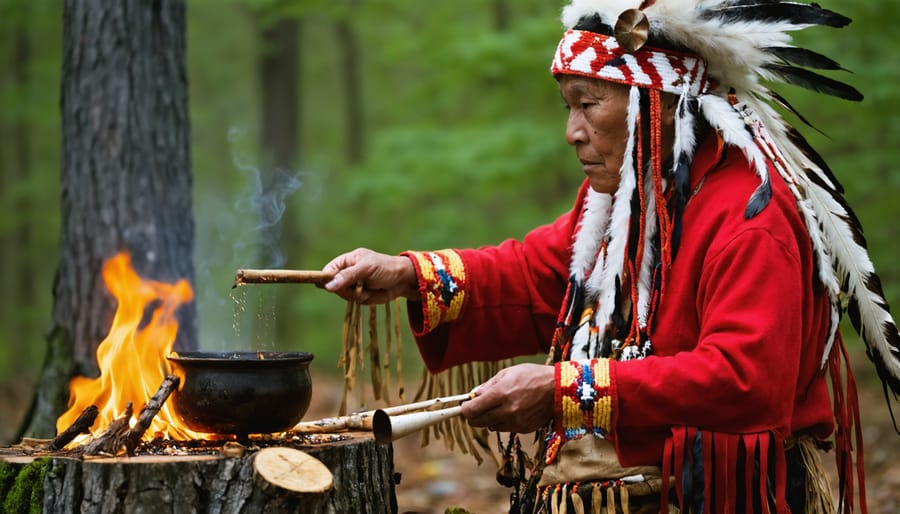
Summer: Season of Growth
As the warm days of summer arrive, Indigenous communities across Ontario celebrate one of the most spiritually significant times of the year. The summer solstice, occurring around June 21st, marks a period of profound ceremony and thanksgiving. Many First Nations communities host powwows during this time, featuring traditional dancing, drumming, and feasting that welcome both Indigenous and non-Indigenous visitors to participate respectfully.
The Strawberry Ceremony holds special significance during early summer, when these heart-shaped berries ripen. Known as the “heart berry” in many Indigenous languages, strawberries are considered medicine berries that promote healing and gratitude. Communities gather to share strawberry teachings, traditional foods, and stories that have been passed down through generations.
Summer also brings ceremonies centered around the sacred medicines that flourish during this season. Tobacco, sage, sweetgrass, and cedar are harvested with careful protocol and thanksgiving. Many communities host medicine walks and teaching circles, where knowledge keepers share traditional ecological wisdom about sustainable gathering practices and the spiritual significance of these plants.
Visitors interested in experiencing these ceremonies should always contact communities in advance and follow local protocols for participation.
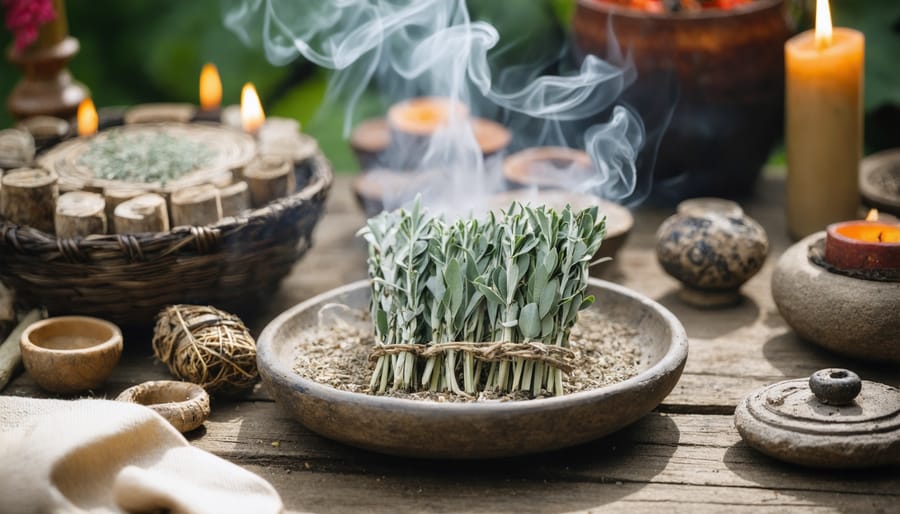
Fall: Harvest Ceremonies
Fall brings some of the most significant ceremonies in Indigenous communities across Ontario, as nations gather to give thanks for the year’s harvest and prepare for the coming winter. The traditional harvest thanksgiving ceremonies often span several days, with communities coming together to celebrate the Earth’s bounty through song, dance, and shared meals.
Many First Nations hold their own versions of thanksgiving ceremonies, with the Haudenosaunee (Six Nations) people celebrating their Harvest Ceremony in October. During this time, communities express gratitude for crops like corn, beans, and squash – the Three Sisters that have sustained Indigenous peoples for generations.
These autumn gatherings also serve as important preparation times for winter. Communities traditionally preserve foods, share harvesting knowledge between generations, and conduct special ceremonies to ensure good health through the cold months ahead. The ceremonies often include traditional foods like wild rice, squash, and various medicines gathered throughout the growing season.
Visitors interested in learning about these ceremonies should note that while some communities welcome respectful observers during public portions of their harvest celebrations, it’s essential to contact the specific First Nation ahead of time and follow all protocols and guidelines provided.
Winter: Time of Stories
In many Indigenous communities across Ontario, winter is considered the sacred season of storytelling and spiritual reflection. As snow blankets the landscape and temperatures drop, communities gather indoors to share wisdom through traditional storytelling practices that have been passed down through generations.
During these cold months, Elders share creation stories, legends, and teachings that explain the natural world and reinforce cultural values. These stories aren’t just entertainment – they’re vital educational tools that help preserve Indigenous knowledge and strengthen community bonds. Many ceremonies focus on giving thanks for the previous harvest and preparing spiritually for the coming spring.
The winter solstice holds particular significance, with many First Nations hosting ceremonies to honor the longest night of the year. These celebrations often include sacred fires, traditional songs, and special feasts. Some communities practice winter fasting ceremonies, where participants seek spiritual guidance through meditation and connection with the land.
If you’re interested in learning about these traditions, many Indigenous cultural centers across Ontario offer winter programming where visitors can respectfully experience storytelling sessions and learn about seasonal ceremonies firsthand.
Respecting Indigenous Ceremonies Today
Proper Protocol and Etiquette
When invited to observe or participate in Indigenous ceremonies, it’s essential to follow proper protocol to show respect for these sacred traditions. Always wait for an explicit invitation before attending any ceremony – these are not tourist attractions but meaningful spiritual practices.
Dress modestly and comfortably, avoiding bright colors or revealing clothing. Some ceremonies may require specific attire, so ask your host about appropriate dress codes beforehand. Women may be asked to wear long skirts, and both men and women might need to remove shoes for certain indoor ceremonies.
Photography is often prohibited during ceremonies, so leave your camera at home unless given explicit permission. Similarly, cell phones should be turned off to avoid disrupting the sacred atmosphere. It’s customary to bring tobacco as a gift for the Elder or ceremonial leader – this shows respect and gratitude for being included.
Listen carefully to instructions and follow the lead of community members. Some ceremonies may involve sitting or standing for extended periods, and it’s important to remain present and engaged throughout. Don’t leave during a ceremony unless absolutely necessary.
If you’re unsure about anything, it’s perfectly fine to ask questions respectfully before the ceremony begins. Most Indigenous hosts appreciate genuine interest and willingness to learn about their traditions. Remember that each nation has its own unique protocols, so what’s appropriate at one ceremony might differ at another.
Lastly, avoid sharing sensitive details about ceremonies on social media or with others, as some aspects may be meant to stay within the ceremonial space.
Cultural Centers and Educational Programs
Ontario offers numerous opportunities to learn about Indigenous ceremonies and traditions in respectful, educational settings. Indigenous cultural centers across the province provide immersive experiences led by Knowledge Keepers and community members.
The Woodland Cultural Centre in Brantford offers guided tours and workshops where visitors can learn about Haudenosaunee traditions and ceremonies through interactive exhibits and cultural programs. In Thunder Bay, the Fort William Historical Park features seasonal programming that highlights Anishinaabe customs and ceremonies, including traditional storytelling sessions and medicinal plant walks.
For a deeper understanding of Indigenous spirituality, the Kay-Nah-Chi-Wah-Nung Historical Centre (Manitou Mounds) near Rainy River provides educational programs about sacred sites and ceremonial practices. Their interpretive center offers hands-on learning experiences and guided tours led by Indigenous educators.
Many of these centers also host special events throughout the year, such as pow wows and seasonal celebrations, where visitors can respectfully observe and participate when invited. Remember to always check ahead for scheduled programs and proper visiting protocols. Most centers require advance booking for ceremonial teachings and cultural workshops.
Pro tip: Consider participating in a smudging workshop or traditional craft session as an introduction to Indigenous cultural practices. These educational experiences provide meaningful ways to learn while ensuring ceremonies are shared in appropriate contexts.
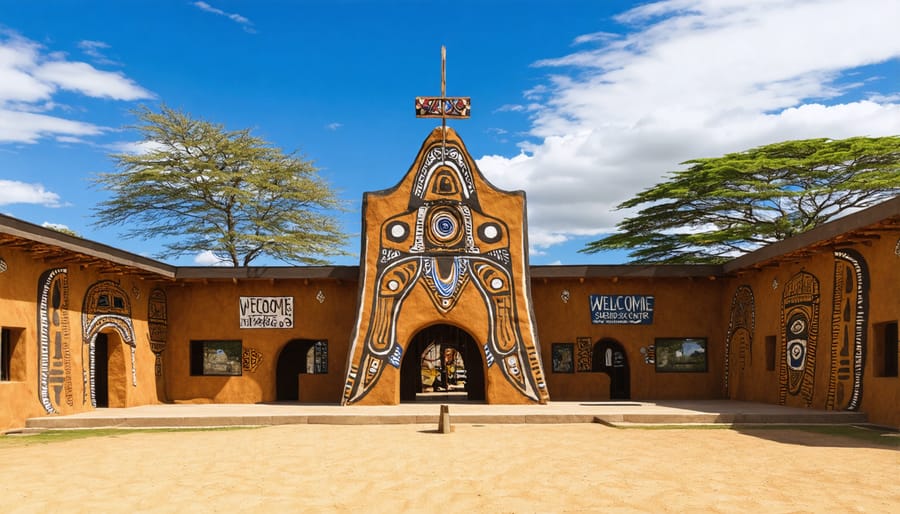
Supporting Indigenous Tourism in Ontario
Supporting Indigenous tourism in Ontario offers a meaningful way to learn about and honor traditional ceremonies while contributing to local communities. Many Indigenous-operated tourism businesses provide authentic cultural experiences, from guided medicine walks to traditional craft workshops. These experiences not only share ancestral knowledge but also support Indigenous-led conservation efforts across the province.
When planning your visit, book directly through Indigenous-owned businesses and organizations. Look for experiences certified by Indigenous Tourism Ontario (ITO) to ensure authenticity and responsible practices. Popular activities include traditional storytelling sessions, ceremonial teachings, and guided nature experiences that connect visitors with the land’s ancestral stewards.
Remember to approach these experiences with respect and an open mind. Photography may not be permitted during certain ceremonies, and it’s essential to follow the protocols shared by Indigenous guides. Many locations offer orientation sessions before ceremonial experiences, helping visitors understand appropriate behavior and cultural significance.
Consider visiting during Indigenous cultural festivals and powwows, which often feature public ceremonies and celebrations. These events provide excellent opportunities to support Indigenous artisans and learn about traditional practices in a welcoming environment.
Indigenous ceremonies remain vital threads in Ontario’s cultural fabric, connecting past, present, and future generations. By learning about and respecting these sacred traditions, we can all play a part in preserving this precious heritage. Remember that authentic appreciation means being mindful, asking questions when appropriate, and following community protocols. Together, we can ensure these meaningful ceremonies continue to enrich Ontario’s diverse cultural landscape for generations to come.

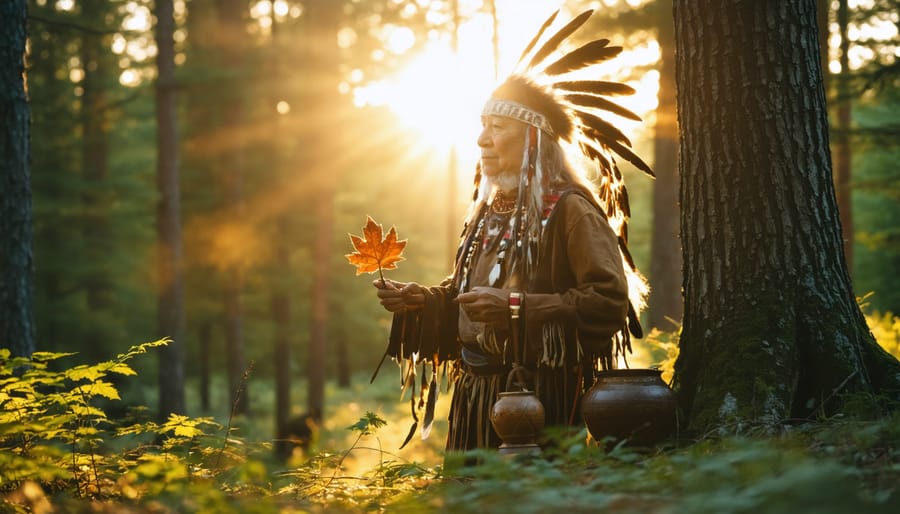
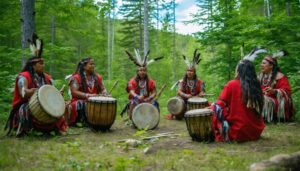

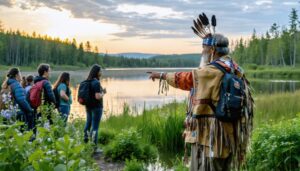
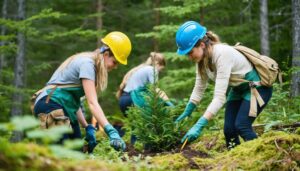


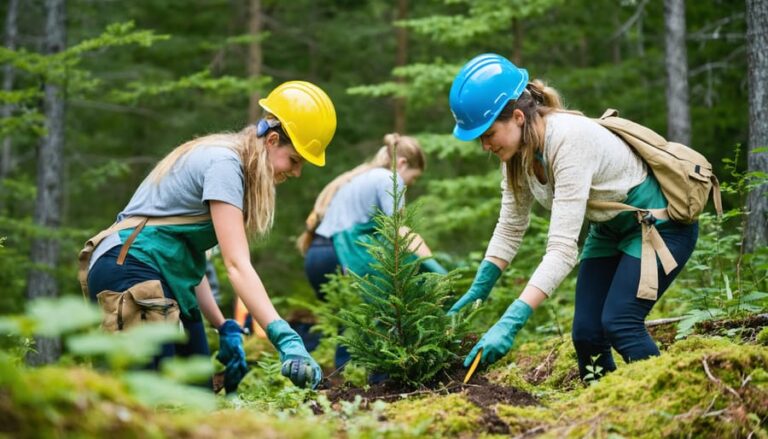
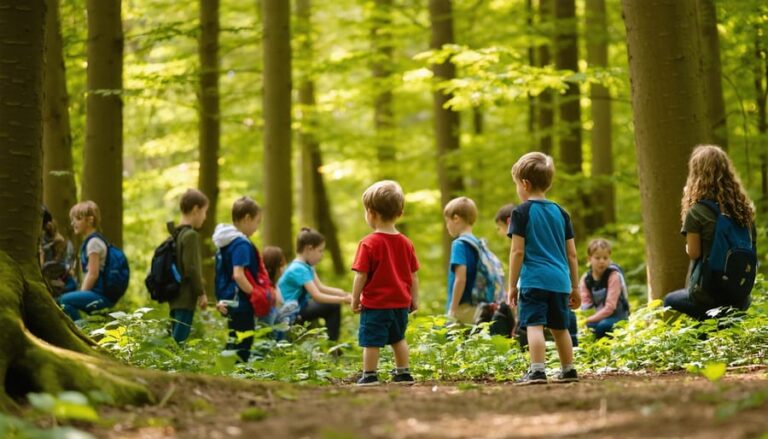

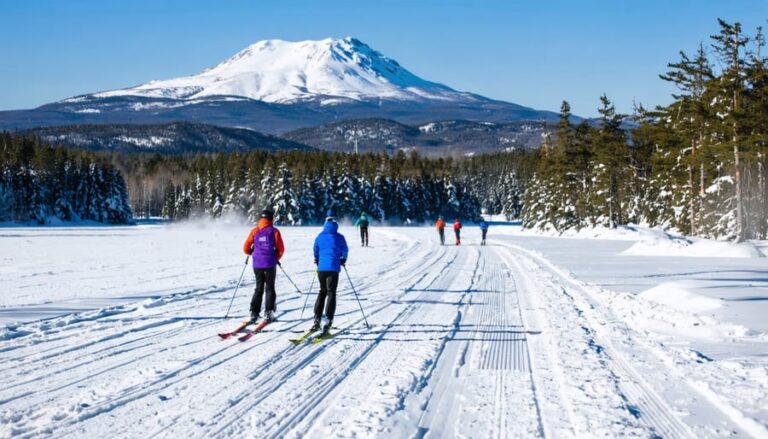


+ There are no comments
Add yours